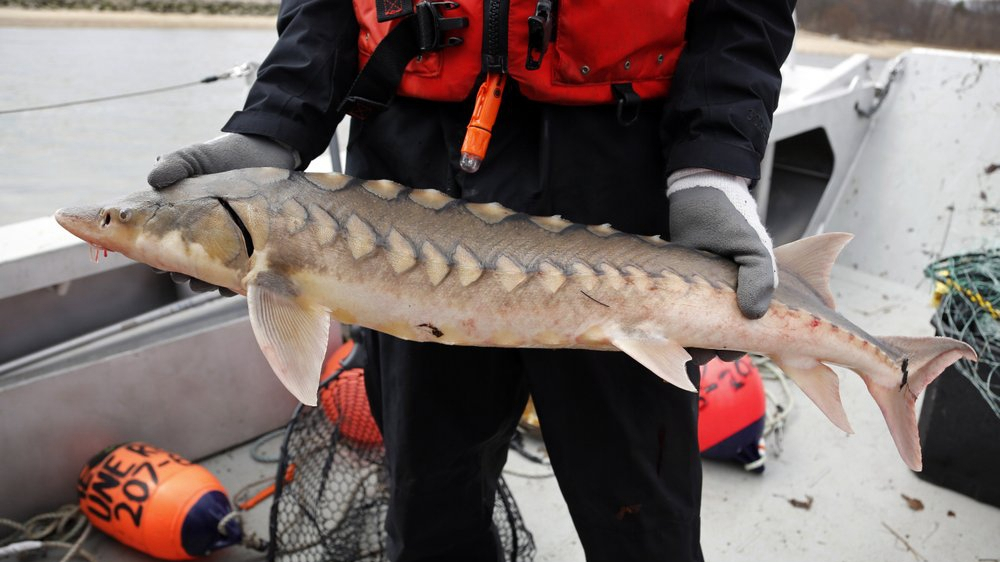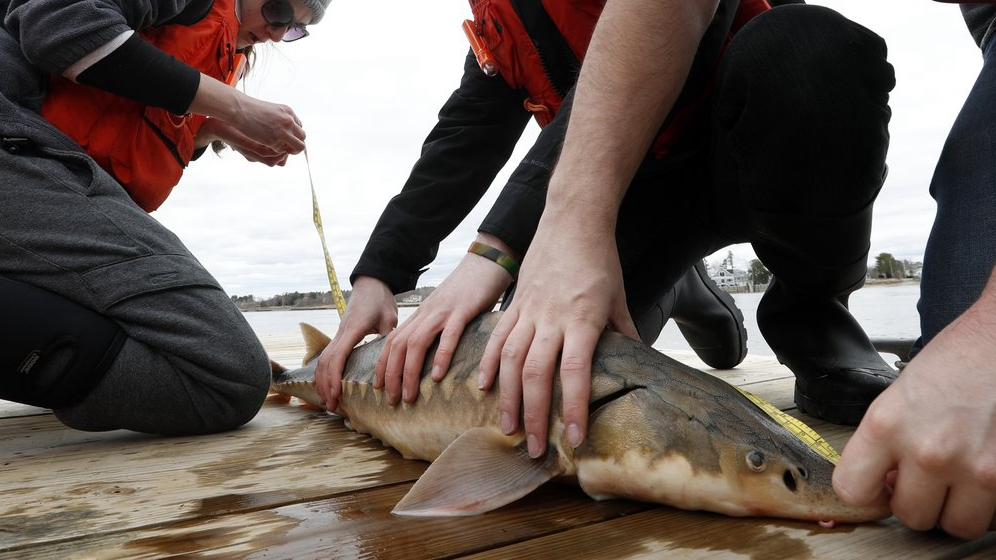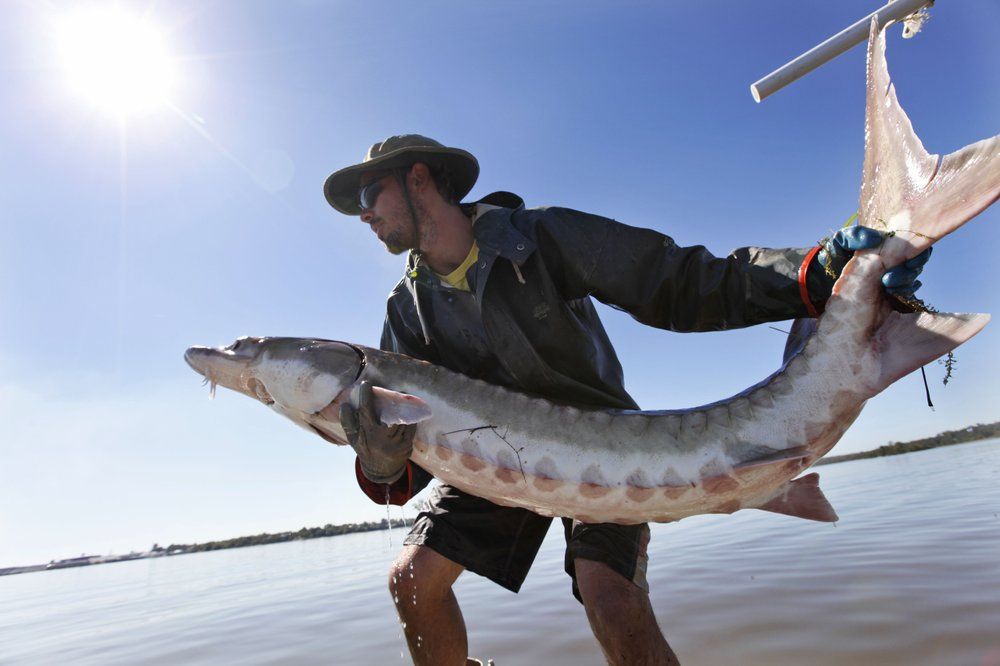

A researcher holds an endangered shortnose sturgeon caught in a net in the Saco River in Biddeford, Maine, U.S., April 25, 2019. /AP Photo
Sturgeon were America's vanishing dinosaurs, armor-plated beasts that crowded the nation's rivers until mankind's craving for caviar pushed them to the edge of extinction.
More than a century later, some populations of the massive bottom feeding fish are showing signs of recovery in the dark corners of U.S. waterways.
Increased numbers are appearing in the cold streams of Maine, the lakes of Michigan and Wisconsin and the coffee-colored waters of Florida's Suwannee River.
A four-meter-long Atlantic sturgeon — as long as a Volkswagen Beetle — was recently spotted in New York's Hudson River.

An endangered shortnose sturgeon is tagged after being caught in a net from the Saco River in Biddeford, Maine, U.S. /AP Photo
"It's really been a dramatic reversal of fortune," said Greg Garman, a Virginia Commonwealth University ecologist who studies Atlantic sturgeon in Virginia's James River. "We didn't think they were there, frankly. Now, they're almost every place we're looking."
Following the late 1800s caviar rush, America's nine sturgeon species and subspecies were plagued by pollution, dams and overfishing. Steep declines in many populations weren't fully apparent until the 1990s.
"However, in the past three decades, sturgeon have been among the most studied species in North America as a result of their threatened or endangered status," said James Crossman, president of The North American Sturgeon and Paddlefish Society, a conservation group.

Matthew Balazik, a sturgeon research ecologist with Virginia Commonwealth University, holds a baby Atlantic sturgeon caught from Virginia's James River, U.S., December 29, 2018. /AP Photo
Scientists have been finding sturgeon in places where they were thought to be long gone. They're seeing increased numbers of them in some rivers because of cleaner water, dam removals and fishing bans.
These discoveries provide some hope for a fish that is among the world's most threatened. But the U.S. sturgeon population is only a tiny fraction of what it once was — and the health of each species and regional populations vary widely.
While some white sturgeon populations on the Pacific Coast are abundant enough to support limited recreational and commercial fishing, Alabama sturgeon are so rare that none have been caught for years.
Across America, dams still keep some sturgeon populations low by blocking ancient spawning routes. The fish face newer threats such as rising water temperatures from climate change and the sharp propellers of cargo ships.
It will take decades to measure a population's recovery, experts said. Sturgeon sometimes live longer than humans. And they spawn infrequently, often requiring half a century to bounce back from overfishing.

Virginia Commonwealth University graduate student Matt Balazik prepares to toss a Atlantic sturgeon into the James River near Charles City, Virginia, U.S., October 8, 2010. /AP Photo
Environmentalists warn that more conservation efforts are still needed.
"They've survived relatively unchanged for 200 million years," said Jeff Miller, a senior conservation advocate at the Center for Biological Diversity, which is planning a lawsuit seeking federal safeguards for sturgeon in the Great Lakes and Mississippi River watersheds. "If they're going to survive us, they're going to need additional protection."
(Cover image via AP)
(If you want to contribute and have specific expertise, please contact us at nature@cgtn.com.)

Copyright © 2018 CGTN. Beijing ICP prepared NO.16065310-3
Copyright © 2018 CGTN. Beijing ICP prepared NO.16065310-3